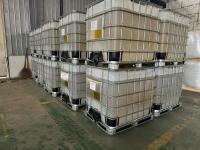Polyamine is a class of water-soluble, cationic (positively charged) polymers widely used in water treatment and various industrial processes. These polymers are typically synthesized by the polymerization of diallyldimethylammonium chloride (DADMAC), ethylenediamine, and related amine compounds. Their strong cationic nature makes polyamines highly effective for destabilizing and aggregating negatively charged particles such as colloids, organic matter, and suspended solids.
The main application of polyamine lies in water and wastewater treatment, where it functions as a primary coagulant or coagulant aid. This role is critical across industries and municipalities that handle large volumes of wastewater or require high-quality process water. Below is a detailed breakdown of how polyamine is applied across different sectors, with a primary focus on its water treatment capabilities.
1. Municipal Water and Wastewater Treatment
Primary Coagulant for Raw Water Treatment
In municipal drinking water treatment plants, polyamine is commonly used as a primary coagulant to clarify raw water. It destabilizes colloidal particles, organic matter, and turbidity-causing agents in surface water sources such as rivers, lakes, and reservoirs. Once added, polyamine neutralizes the negative charges on these particles, allowing them to form larger flocs that can settle out or be filtered.
Polyamine is favored over traditional metal salt coagulants (like alum or ferric chloride) in many systems because it:
-
Produces less sludge
-
Improves filter run times
-
Reduces corrosiveness in distribution systems
-
Enhances coagulation in cold or low-turbidity waters
Coagulant Aid in Sewage Treatment
In secondary and tertiary stages of sewage treatment, polyamine is often used alongside aluminum- or iron-based coagulants to increase floc strength and reduce sludge volume. It is especially effective in removing:
-
Biological solids
-
Organic matter
-
Phosphates
-
Surfactants
-
Viruses and bacteria (by adsorption and entrapment in flocs)
When paired with other treatment chemicals like polyacrylamide, polyamine significantly improves clarification, resulting in cleaner effluent and more efficient dewatering of sludge.
2. Industrial Wastewater Treatment
Treatment of Effluents from Manufacturing Industries
Many industrial processes discharge wastewater containing emulsified oils, dyes, metals, suspended solids, and chemical residues. Industries that rely heavily on polyamine for effluent treatment include:
-
Textiles and Dyeing: For color removal and reduction of chemical oxygen demand (COD)
-
Pulp and Paper: For pitch control and fiber recovery
-
Oil Refineries and Petrochemicals: For separating oil and water phases
-
Food and Beverage: For removing organic solids and improving clarity
Polyamine is extremely effective at breaking oil-water emulsions and coagulating fine particles, resulting in clear and reusable effluent. In some cases, it also allows water to be recycled within the plant, reducing fresh water consumption.
Heavy Metal Precipitation
When used with other precipitation agents or coagulants, polyamine helps in removing trace heavy metals like lead, chromium, cadmium, and mercury by flocculating metal-hydroxy complexes into filterable solids.
3. Oil and Gas Industry
Produced Water Treatment
During oil and gas production, large volumes of “produced water” are generated, often contaminated with oil, grease, salts, and solids. Polyamine is widely used to remove suspended hydrocarbons and clarify this water before reuse, reinjection, or discharge.
Demulsification and Oil Separation
In oil processing units, polyamine can act as a demulsifier, helping separate emulsified oil from water. This ensures higher oil recovery and prevents contamination of wastewater streams.
4. Pulp and Paper Industry
Fixation of Anionic Trash and Pitch Control
In papermaking, anionic trash refers to negatively charged substances like lignin fragments and dispersants that interfere with papermaking chemistry. Polyamine is added to neutralize these charges and improve retention of fibers and fillers.
It also helps in controlling pitch (sticky organic deposits), which can cause spots on paper and damage machine parts. Polyamine binds pitch particles and prevents them from agglomerating.
Effluent Clarification and Sludge Dewatering
Polyamine aids in clarifying white water and improving the dewatering of biological sludge. This results in cleaner discharge water and easier handling of solid waste.
5. Textile and Dye Wastewater Treatment
The textile industry generates large amounts of colored wastewater rich in dyes, surfactants, and chemicals. Polyamine is especially effective in removing reactive, acid, and direct dyes by:
-
Breaking dye-molecule charges
-
Forming insoluble flocs
-
Reducing total suspended solids (TSS) and COD
In combination with anionic flocculants, polyamine ensures complete dye removal, leading to compliance with strict environmental discharge regulations.
6. Sludge Conditioning and Dewatering
In many treatment plants, polyamine is applied in the sludge conditioning process to enhance solid-liquid separation. It:
-
Improves filter press efficiency
-
Reduces the moisture content in dewatered sludge
-
Lowers transportation and disposal costs
By tightening the floc structure, it creates a cake with better dryness and fewer odors.
7. Other Applications
Polyamine is also used in:
-
Cooling water systems (as a dispersant and slime control agent)
-
Tannin removal from wastewater
-
Leather tanning and gelatin clarification
-
Clarification of sugar juice in sugar mills
The main application of polyamine is in water and wastewater treatment, where it serves as a highly effective coagulant or coagulant aid. Its strong cationic properties allow it to neutralize and destabilize a wide variety of negatively charged contaminants, making it essential in municipal, industrial, and environmental water treatment systems. Whether used to clarify drinking water, decolorize dye effluents, treat oily wastewater, or dewater sludge, polyamine plays a critical role in improving water quality, reducing chemical consumption, and enhancing operational efficiency.




581_small.jpg)
217_small.jpg)
548_small.jpg)